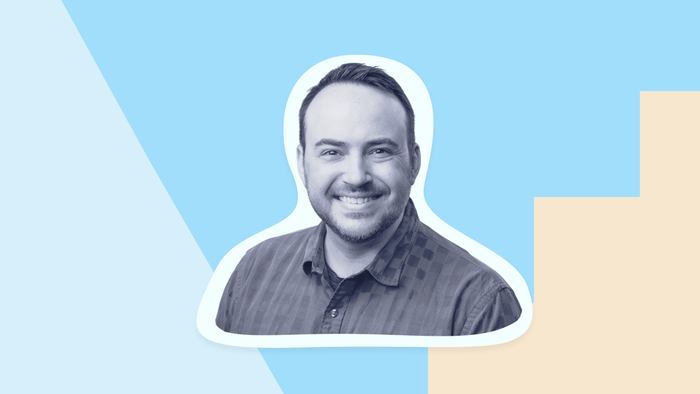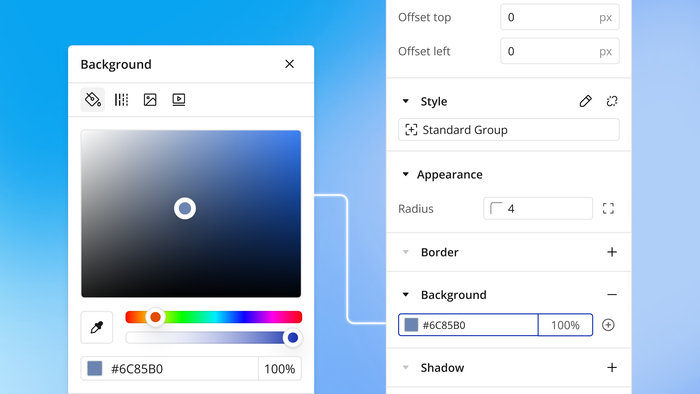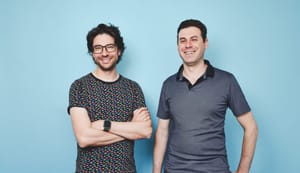Not everyone who works at Bubble comes from a traditional tech background — in fact, we pride ourselves on welcoming people who have experience in the exact opposite corners of our professional universe. Take Andrew Vernon, for instance. Now a Bubble Developer who works for (and on) Bubble itself, his journey to no-code started once upon a time in Florida at his family’s school portrait business.
Tell us your Bubble story.
Prior to Bubble, I was a school portrait photographer. I grew up in the family business, starting as a photographer's assistant and eventually becoming the lead for all things photo studio and technology.
Every student photo is tied to a record, and an entire school's photos and the corresponding data is a database of sorts that needs to be managed. This initially led me to Airtable and Zapier, which I used to automate and improve several key processes of our business.
Both tools gave me a deep appreciation for what can be accomplished with no-code tools. But the segmentation and lack of a front-end were always drawbacks. Often your data and automations live in separate tools, and inviting other members of the team to interact with the data meant having to teach them those tools. You couldn't customize a UI to limit the actions of someone who just needed to do one particular thing with the data.
Enter Bubble. I was immediately struck by the fact that everything I needed existed in one tool. I could build out my data structure, connect it with workflows, and have those workflows drive a custom front-end where I completely controlled what appeared, what people could do, and what they could access.
I set out to learn as much as I could about Bubble through Coaching No-Code Apps. Soon, I had a working version of ShootAssist, a business management app for school portrait photographers — my first Bubble app.
Word spread among the very close-knit industry that I had a custom CRM for school photographers, and soon I ended up with my first paying users and a micro-SaaS business on my hands. That was mind-blowing.
From there, I continued to learn Bubble as a tool and implement solutions for our business. It's a long story about how I ended up leaving the family business and joining Bubble as an employee, but the short of it is that I knew my passion for Bubble was growing, and it felt like the right time to pursue that passion instead of remaining in the photography industry.
What does your career look like today?
I'm part of the product team at Bubble responsible for building and maintaining bubble.io, which also happens to be built on Bubble. It's a dream role to find myself in. Not only am I able to build with Bubble full-time, but I have the unique opportunity to provide direct feedback to the various teams who are building new features or working on improving the existing feature set.
How has Bubble unlocked doors for your career?
It's freeing to realize I can solve my own problems with custom software. I figured I would be a school photographer for the rest of my life. Finding myself on the product team of a tech startup is absolutely wild.
Software development used to feel like an expensive endeavor where you pay someone else to develop your idea and hope they translate it accurately. Bubble has changed the game where I can build exactly what I or my end-users envision. With Bubble, it's possible to build fully functional software even though I have no idea how to code.
How many Bubble apps have you built to date? Which one was the coolest?
I currently have four apps that are live and solving specific problems for the school photography industry.
One app that I'm especially proud of handles file delivery when a parent orders a digital copy of their student's school photos. Believe it or not, some school photographers still burn CDs to deliver these images. Dropshot allows a photographer to upload a CSV of who purchased image files, along with a folder of images, and then it texts and emails the files and a copyright release to each buyer. It automatically consolidates the text and email when there are multiple siblings being delivered to the same buyer, and I built it in a way that uses two-factor authentication (2FA) so things can remain secure without the parent having to create an account.
What excites you most about the future of no-code?
No-code empowers people with ideas and problems to build custom apps themselves in less time, for less money. This is a game-changer and feels similar to what happened a while ago in the photography industry. It used to be that only people with specialized equipment and expertise could create beautiful, high-quality portraits. Now, our phones have portrait mode built right in, and AI can generate 20 variations of business headshots in just a couple of clicks.
I think we'll continue to see no-code move in a similar direction of making it easier and faster to generate high-quality software and empower more people to build custom, creative solutions to problems.
What’s your favorite Bubble hack or little-known tip?
Hard to pick just one, but one that I use often is formatted as text.
You can use it at the end of a Boolean statement to customize the text output for cases where the value is yes/no. And, with a list of things, you can use it to customize the text that's generated for each item in the list. It’s useful for creating JSON, working with APIs, or customizing the presentation of a list of things. I highly recommend learning how to use this operator if you haven't already.
What would you say to someone who’s considering a career in no-code?
Jump in! You can use no-code to solve individual problems, make existing workstreams more efficient, create entirely new applications, etc. It can easily scale from hobby to side hustle to full-time career. There hasn't ever been a better time to get involved.
Build for as long as you want on the Free plan. Only upgrade when you're ready to launch.
Join Bubble






